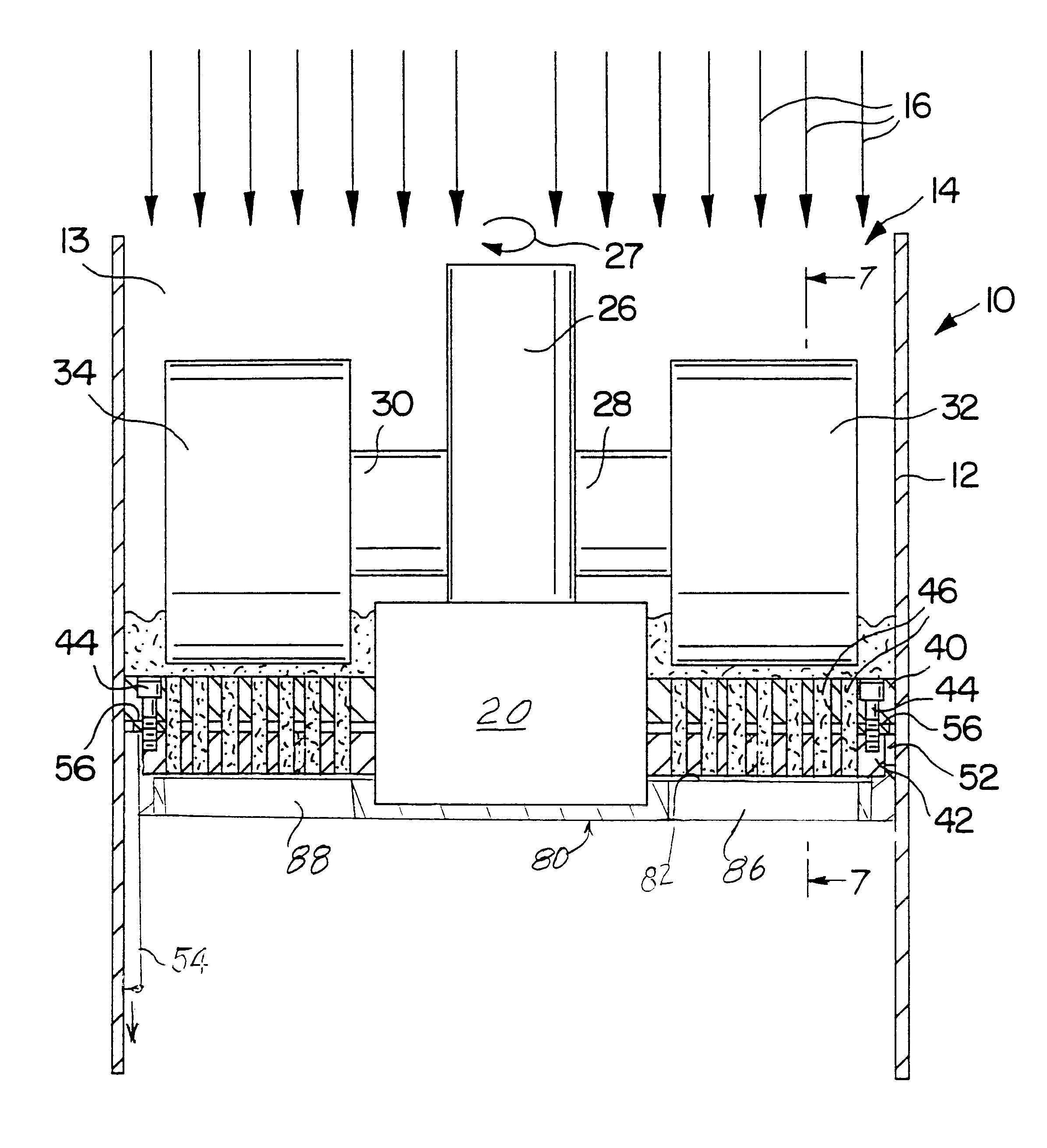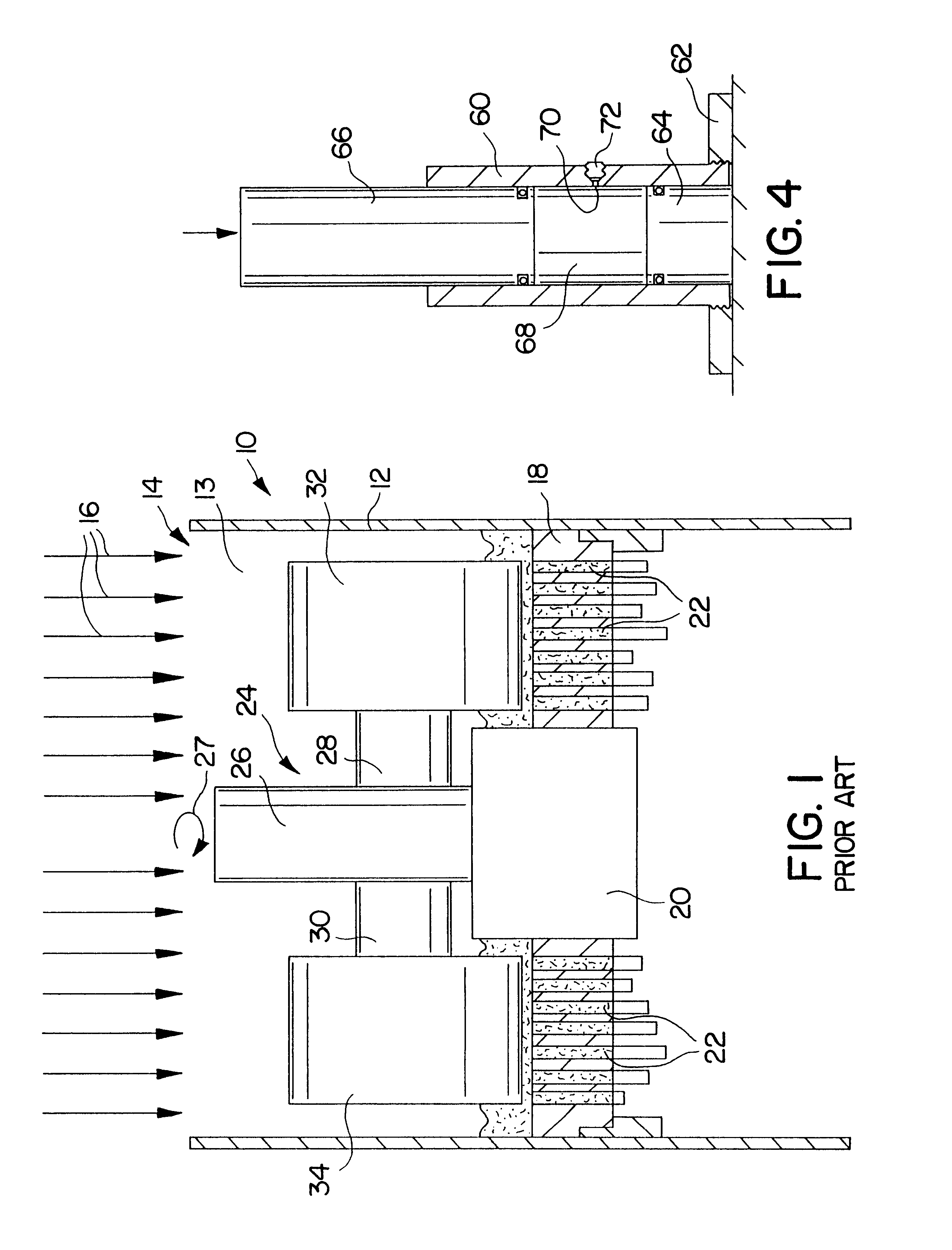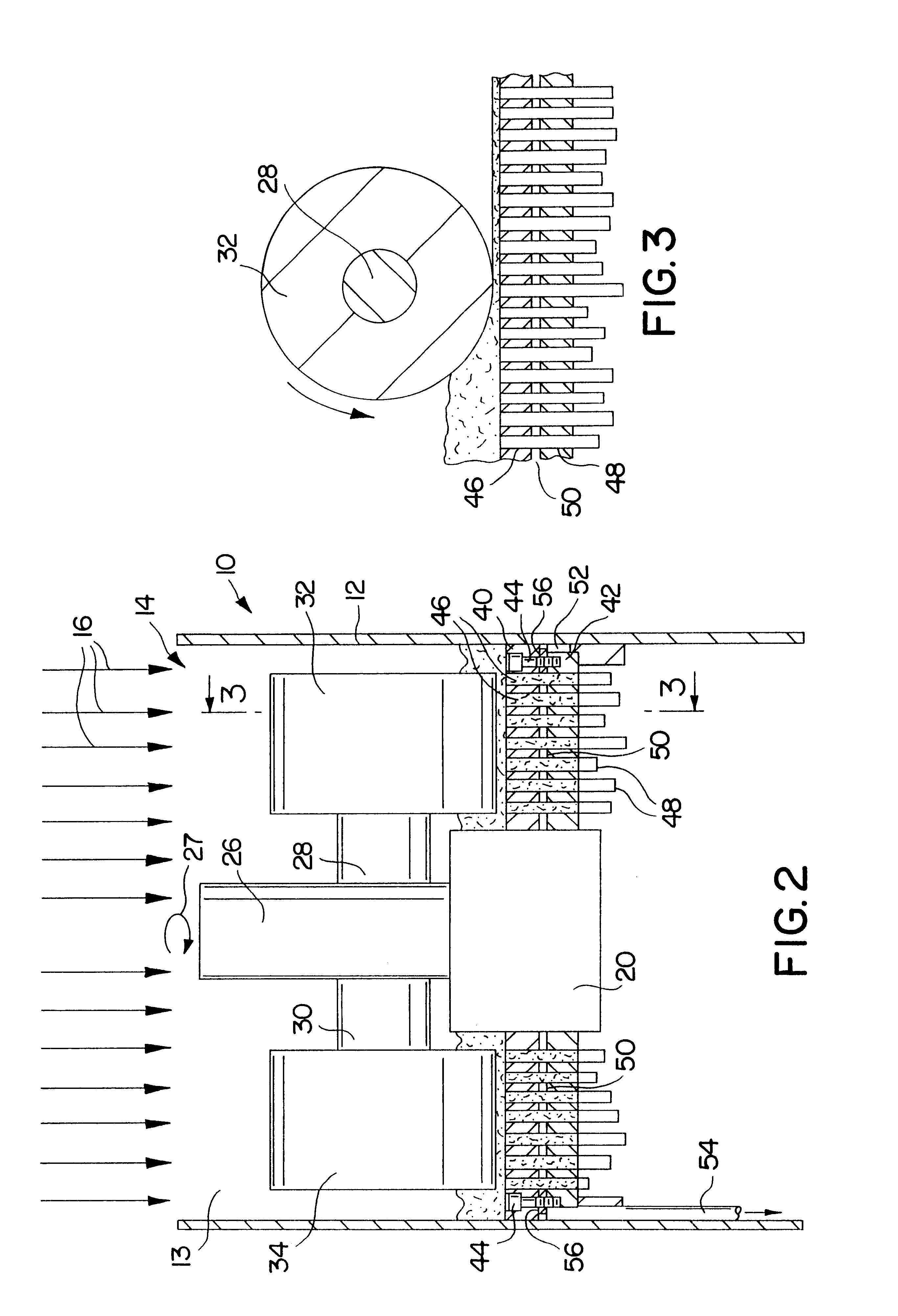Apparatus for dewatering and pelletizing particulate fuel
a technology of pelletizer and particulate fuel, which is applied in the field of pelletized materials, can solve the problems of inability to include dewatering systems for the removal of excess moisture, failure to meet the needs of disposal procedures, and failure to meet the needs of production, etc., and achieves the effects of low moisture content, high strength and reduced production cos
- Summary
- Abstract
- Description
- Claims
- Application Information
AI Technical Summary
Benefits of technology
Problems solved by technology
Method used
Image
Examples
example 2
In this example, the moisture discharge port 70 was opened and the spacer and piston were sealed so that the only escape path for moisture was through the discharge port. Again, 10 grams of air dried coal having a top size of less than 1 / 2 mm were mixed with 3 milliliters of water and the mixture placed in the die chamber. 3,000 PSIG of load was then applied and initially some coal particles were discharged with the water escaping from the port, but as the moisture level in the pellet dropped, clear water was discharged and a strong pellet was formed. Other tests were performed under the same conditions except that the moisture discharge port was closed. No pellet was formed.
While this test clearly demonstrated that a strong pellet can be formed from finely divided comminuted coal or coal fines alone, with the application of pressure as low as 3,000 PSIG, it demonstrated that a smaller die opening is required than was used in the laboratory apparatus, wherein the water outlet diamet...
example 3
Using the laboratory equipment set up as described above in example 2, in which the moisture port was open and rubber seals were employed to seal the ram and spacer, tests were conducted to evaluate the effect of the addition of biomass to coal fines. In this test, five grams of -1 / 2 mm top size air dried coal, five grams of paper mill sludge, and three ml of water were mixed and placed in the die chamber. 3,000 PSIG of pressure was applied and clear water only was observed to be discharged from the port. A strong pellet was formed. It was apparent that the presence of the paper sludge tended to bridge the outlet opening and retain the smaller coal particles from escaping. A second test was performed with the moisture discharge port closed, and no pellet was formed.
It was apparent that, in the operation of a commercial pellet mill embodying the invention, the dimensions of the openings in the die cavities will depend primarily on the composition and particle size of the feed stock t...
PUM
| Property | Measurement | Unit |
|---|---|---|
| particle size | aaaaa | aaaaa |
| diameter | aaaaa | aaaaa |
| pelletizing pressure | aaaaa | aaaaa |
Abstract
Description
Claims
Application Information
 Login to View More
Login to View More - R&D
- Intellectual Property
- Life Sciences
- Materials
- Tech Scout
- Unparalleled Data Quality
- Higher Quality Content
- 60% Fewer Hallucinations
Browse by: Latest US Patents, China's latest patents, Technical Efficacy Thesaurus, Application Domain, Technology Topic, Popular Technical Reports.
© 2025 PatSnap. All rights reserved.Legal|Privacy policy|Modern Slavery Act Transparency Statement|Sitemap|About US| Contact US: help@patsnap.com



